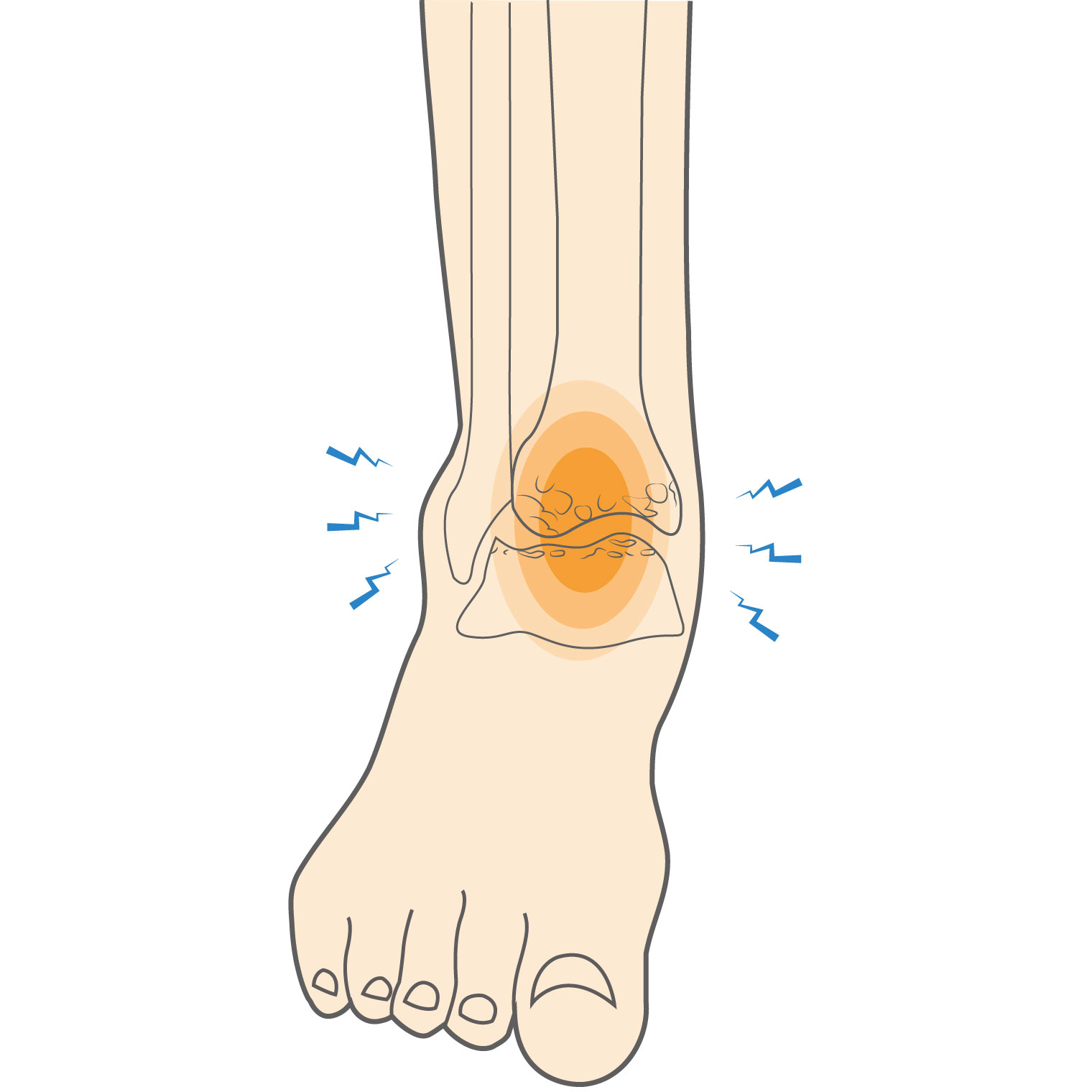The ankle joint is made up of three bones, the tibia or shin bone, the fibula a thin bone on the outside of the leg and the talus which sits on top of the calcaneus or heelbone. Covering these bones is a smooth rubbery substance called articular cartilage that serves as a cushion and allows the bones to smoothly glide over one another. Ankle arthritis is a condition where there is a breakdown or loss of this cartilage. As the cartilage is lost the bones rub against one another causing pain and stiffness and loss of motion
While there are many causes of ankle arthritis, the most common is due to “wear and tear” This is commonly referred to as degenerative arthritis of the ankle. Another common cause of ankle arthritis is called post traumatic arthritis which occurs after an ankle injury. Sometimes the symptoms may take years to appear. Ankle arthritis may also be seen in diseases such as rheumatoid arthritis, psoriatic arthritis, and gout.
Common symptoms of ankle arthritis include:
Pain with ankle motion
Increased pain with sitting or resting
Stiffness and swelling
Difficulty walking


